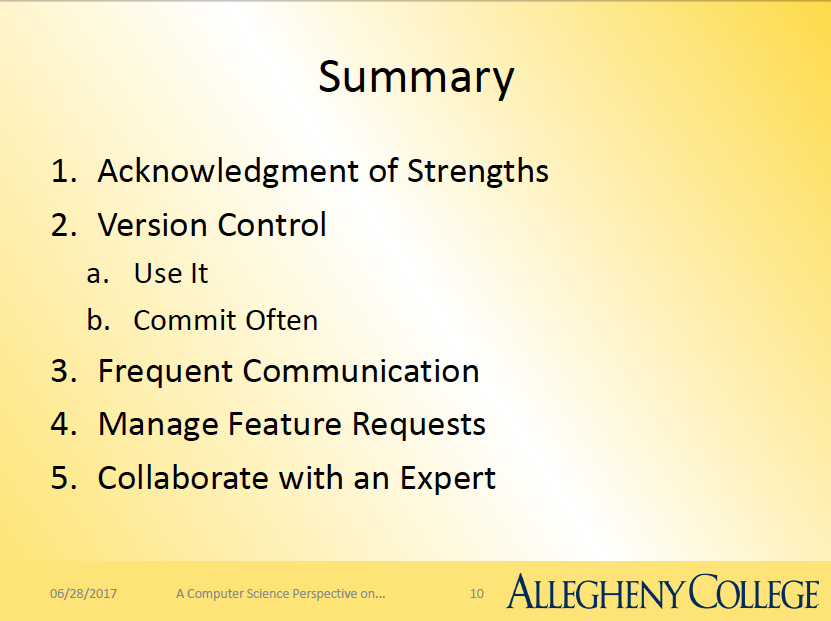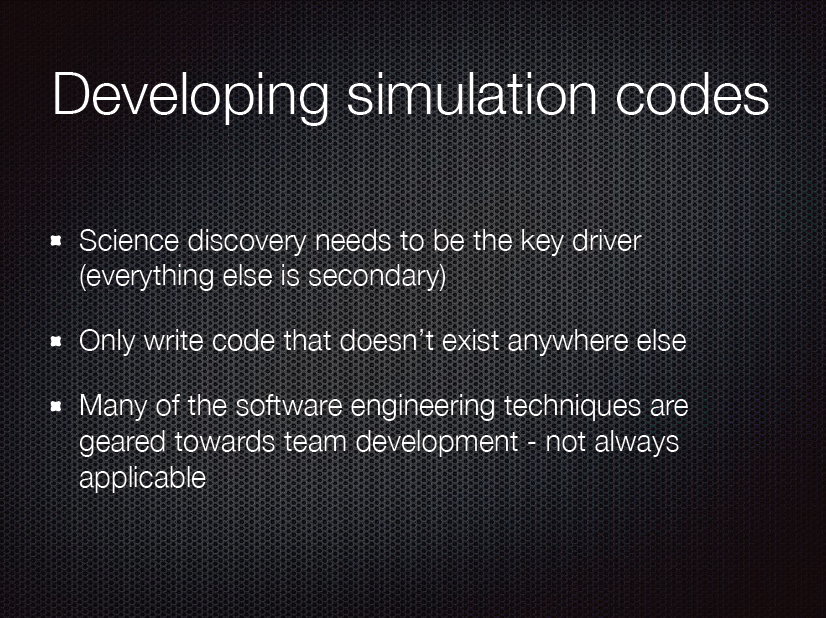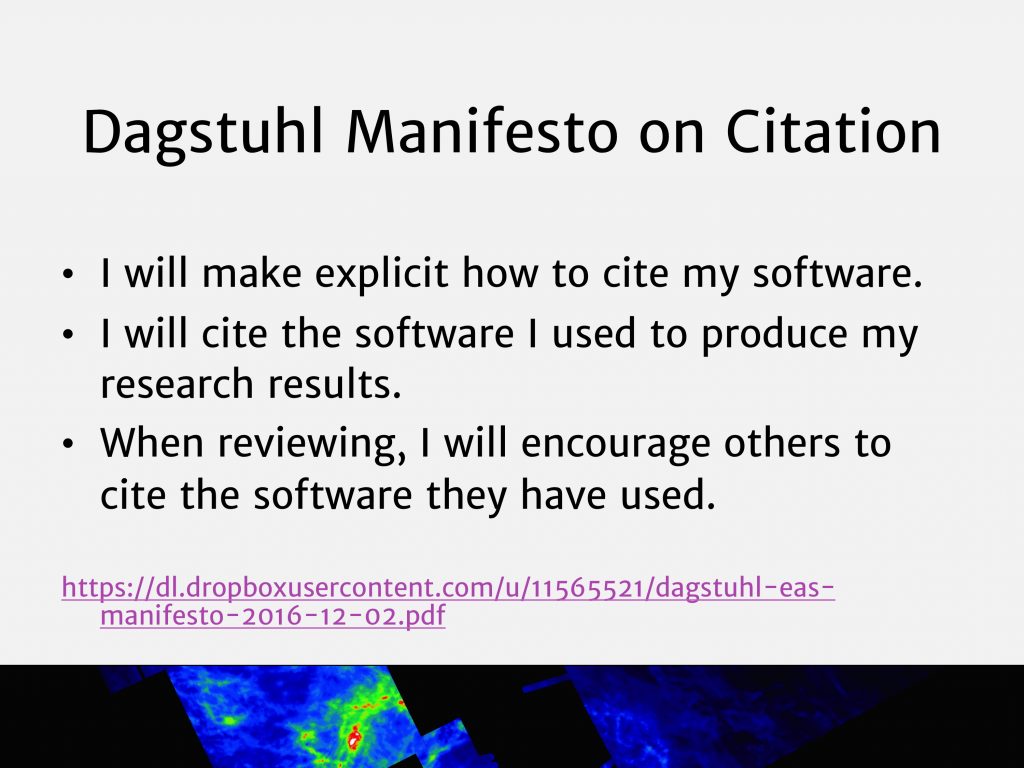Here are a few slides from presentations mentioned in a previous blog post; slides from more of the talks at EWASS will be covered in another post.
Software development best practices from Astropy, Thomas Robitaille (slides: PDF)

All contributions are made in GitHub repositor(ies). All contributions are reviewed via pull requests. Test suite run using pytest. Docs written in Sphinx, hosted on ReadTheDocs. Continuous integration on Travis AppVeyor, Circle CI.
A Computer Science Perspective on the Astronomy Research Software Process by John Wenskovitch (slides: PDF)

Summary: 1. Acknowledgement of strengths. 2. Version control. a. Use it. b. Commit often. 3. Frequent communication. 4. Manage feature requests. 5. Collaborate with an expert.



Pingback: In conclusion 2 … – ASCL.net